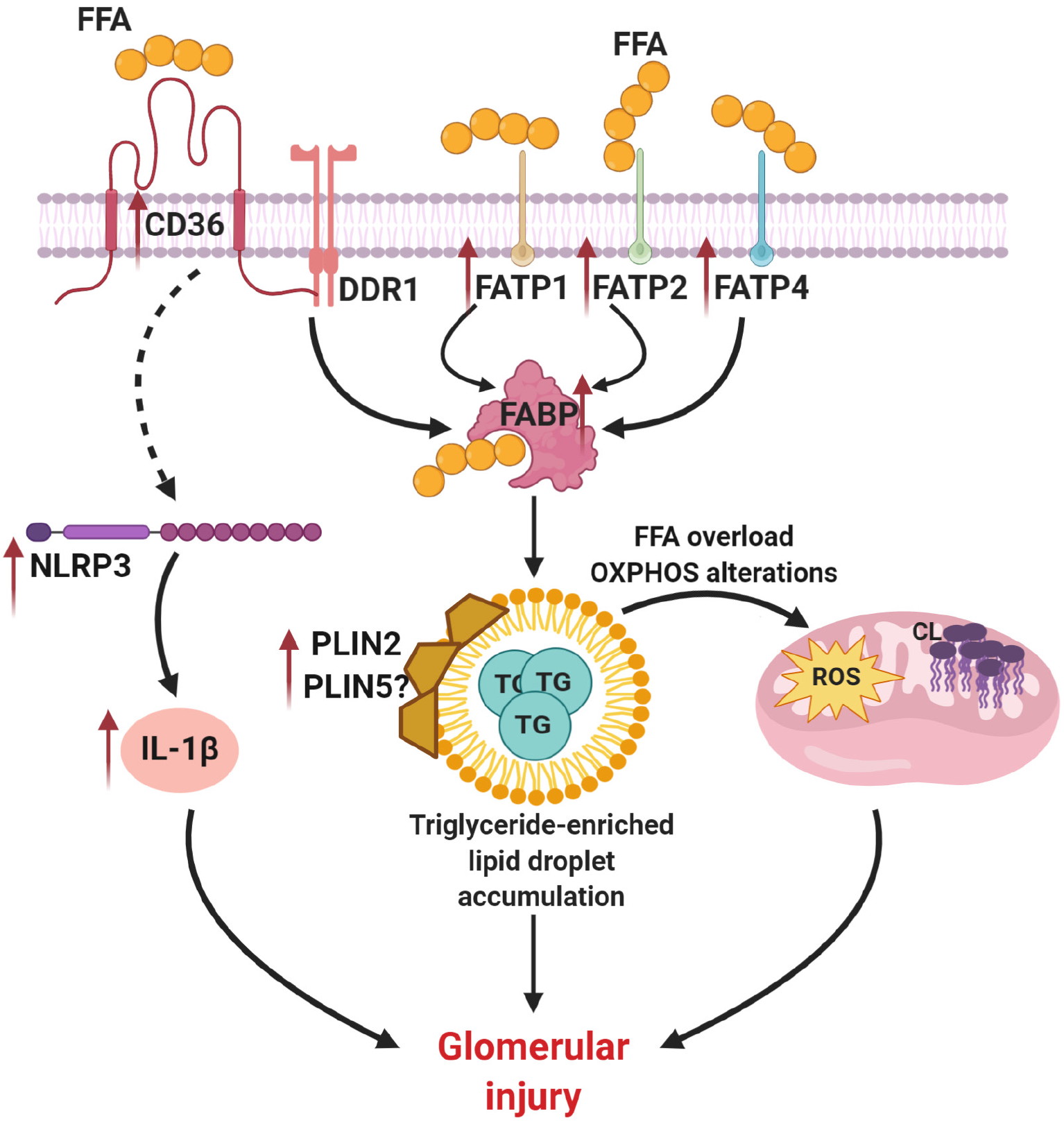Copyright
©The Author(s) 2021.
World J Diabetes. May 15, 2021; 12(5): 524-540
Published online May 15, 2021. doi: 10.4239/wjd.v12.i5.524
Published online May 15, 2021. doi: 10.4239/wjd.v12.i5.524
Figure 2 Abnormalities in triglyceride homeostasis contribute to lipid droplet accumulation in diabetic kidney disease.
Increased expression of scavenger receptor class B (CD36), fatty acid transporter protein 1 (FATP1), FATP2, FATP4 and fatty acid-binding protein leads to accumulation of fatty acids inside a cell, abnormalities in triglyceride (TG) metabolism and formation of TG-enriched lipid droplets. Altered activity of perilipin protein family members (PLIN2 and possibly PLIN5) also contributes to lipid droplet formation. In turn, accumulation of TG-enriched lipid droplet causes alteration in oxidative phosphorylation, cardiolipin accumulation and reactive oxygen species overproduction. Together with increased expression of NLR family pyrin domain containing 3 and interleukin 1β CD36 overexpression causes podocyte injury in diabetic kidney disease. This image was created using BioRender software (www.BioRender.com). FFA: Free fatty acid; DDR1: Discoidin domain receptor 1; FATP1: Fatty acid transporter protein 1; FATP2: Fatty acid transporter protein 2; FATP4: Fatty acid transporter protein 4; FABP: Fatty acid transporter protein; NLRP3: NLR family pyrin domain containing 3; PLIN2: Perilipin protein family member 2; PLIN5: Perilipin protein family member 5; TG: Triglyceride; OXPHOS: Oxidative phosphorylation; ROS: Reactive oxygen species; IL-1β: Interleukin 1 beta.
- Citation: Mitrofanova A, Burke G, Merscher S, Fornoni A. New insights into renal lipid dysmetabolism in diabetic kidney disease. World J Diabetes 2021; 12(5): 524-540
- URL: https://www.wjgnet.com/1948-9358/full/v12/i5/524.htm
- DOI: https://dx.doi.org/10.4239/wjd.v12.i5.524









